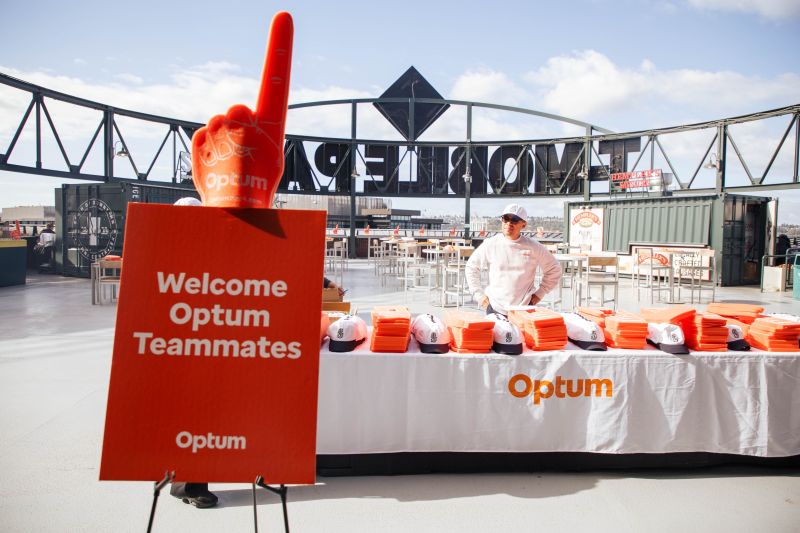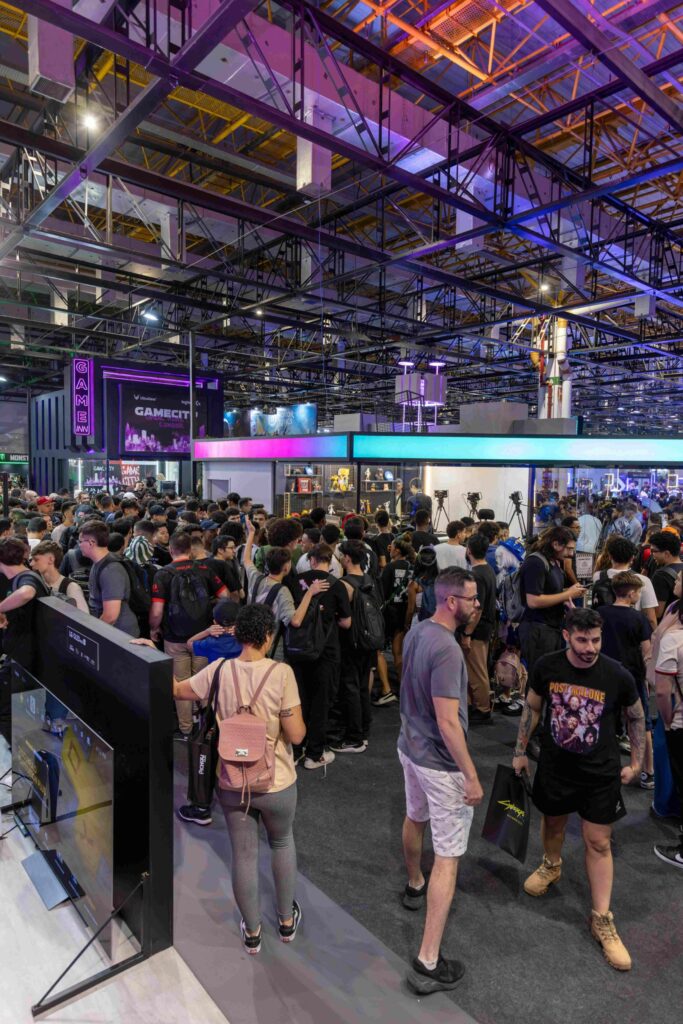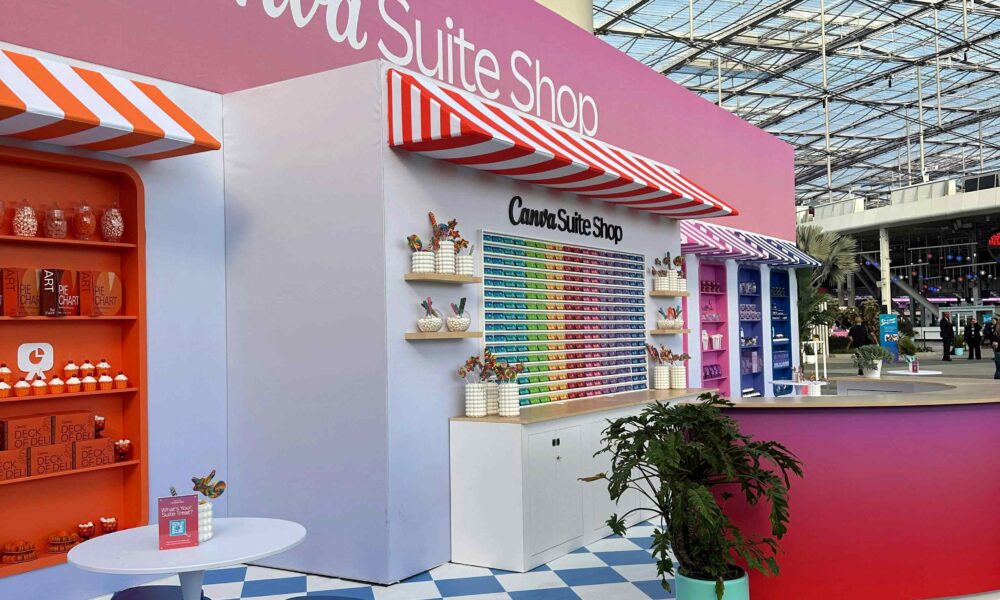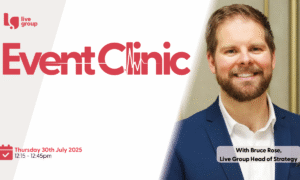5 innovative brand activation ideas for 2025 that boost engagement and lead generation
Let’s be honest, the B2B events world has completely transformed over the past few years. If you’re still relying on the same old exhibition stand and bowl of branded sweets, you’re already behind. More brands are investing in innovative brand activation ideas, so pressure to stand out is real. With 53% of B2B event organisers expecting budget increases and 66% planning more events, the competition for meaningful connections has never been fiercer.
But here’s the good news: this shift creates brilliant opportunities for companies ready to think differently. Whether you’re a scrappy start-up or an established enterprise, the right brand activation strategy can turn a forgettable booth visit into the start of a valuable business relationship. These brand activation ideas are designed to help you do just that.
1. Make Every Interaction Feel Like It’s Just for Them
Gone are the days of one-size-fits-all event experiences. Today’s B2B buyers expect tailored interactions – making personalised brand activation ideas more important than ever. In fact, 74% of marketers are already delivering on this demand through advanced personalisation strategies.
Think about the last networking event you attended. Remember how most conversations started with the same generic pitch? Now imagine arriving at a brand activation event where the organisers already know you’re struggling with supply chain efficiency, and they’ve arranged introductions to three people who’ve solved similar challenges. That’s the power of proper personalisation; it transforms random networking into strategic relationship building.
Smart matchmaking and curated connections are revolutionising how professionals connect at events. Platforms like Grip analyse attendee profiles, past behaviours, and stated goals to facilitate meaningful introductions. It’s like having a brilliant colleague who knows exactly who you should meet and why.
Creating personalised journeys doesn’t require a massive budget. Start by segmenting your attendees based on their industry, role, or challenges. Send pre-event surveys to understand their goals, then create different experience paths, perhaps C-suite executives get exclusive roundtables whilst technical teams enjoy hands-on workshops.
Small companies can begin with basic segmentation tools costing £400-800 per month, whilst larger organisations typically invest £8,000-20,000 annually for comprehensive personalisation platforms purpose-built for brand activation events.
The payoff? Companies using strategic personalisation for brand activation report 50% more likely to generate qualified leads. When every attendee feels like the event was designed specifically for them, engagement naturally follows.
2. Think Small to Win Big with Micro-Events
Here’s a counterintuitive truth: smaller events often deliver better results than massive trade shows. With 63% of organisers seeing increased demand for intimate gatherings, it’s clear that quality brand activation trumps quantity in today’s B2B landscape. One of the most effective brand activation ideas for 2025 is also one of the simplest: think small
Picture this: instead of getting lost in a sea of 5,000 attendees at a huge conference, you’re hosting a focused roundtable with 30 decision-makers from your target companies. The conversations are deeper, the connections more meaningful, and the follow-up happens because you remember everyone you met.
Brand activation examples like this are already delivering results. Optum generated £42 million in contract value from less than £800,000 investment through targeted micro-events. That’s not a typo; it’s proof that the right people in the right room can transform your business.
Start by identifying 3-5 key markets where your ideal customers cluster. Plan quarterly events with 20-50 attendees, focusing on collaborative problem-solving rather than sales pitches. Make it 70% peer learning and 30% your insights, nobody wants to sit through a two-hour product demo disguised as a workshop. These kinds of intimate, experience-led brand activation event ideas feel more valuable and less transactional.

3. Make Business Fun Again with Gamification
Remember when work events were enjoyable? Gamification is bringing that energy back, driving a 48% increase in engagement at B2B events, making it one of the more interactive brand activation ideas you can implement. And no, we’re not talking about childish games, we’re talking about clever, professional challenges that make learning about your solutions genuinely engaging.
Consider creating challenge-based experiences where attendees solve real industry problems using your products. One software company we worked with designed a gamified brand activation – a “digital transformation escape room” – where teams had to use their platform to solve business challenges. Participants loved it, engagement time tripled, and sales conversations happened naturally as people discovered features through play.
The secret sauce: make sure your gamification serves a business purpose at your brand activation event. Educational challenges should reinforce your value proposition whilst providing genuine learning outcomes. Include 3-5 difficulty levels so everyone from interns to CEOs can participate meaningfully.
Technology-wise, 60% of event organisers now consider event apps essential. Event apps like Eventify offer built-in gamification features starting at £2,400 for smaller brand activation events, scaling to £12,000-24,000 for enterprise activations.
If you’re looking to stand out with memorable brand activation examples, a clever, well-designed challenge can give attendees something to talk (and post) about long after the event ends.
4. Sustainability Isn’t Optional Anymore (And That’s a Good Thing)
If you’re looking for brand activation ideas that are both impactful and future-focused, build sustainability into your event strategy. 54% of meeting professionals consider it extremely important, and 25% of younger professionals have stopped working with brands due to poor environmental practices.
But here’s where it gets interesting: sustainable brand activations aren’t just good for the planet; they’re fantastic conversation starters. Instead of handing out plastic tat that ends up in bins, offer experiences that provide lasting value. Think exclusive consultations with industry experts, skills workshops, or even donations to environmental causes in attendees’ names.
Real-world brand activation example: A tech company replaced their usual promotional materials with a “plant a tree for every demo” programme. Not only did they reduce waste, but attendees actively sought them out to contribute to the initiative. This sustainable brand activation idea led to a 40% increase in demo requests, and the trees became a talking point that lasted long after the event.
When running a sustainable brand activation, start simple. Eliminate single-use materials, provide digital resources, and choose sustainable venues. Then build towards more sophisticated approaches like carbon offset programmes and partnerships with environmental organisations that align with your values.
5. Turn One Day into 365 Days of Engagement
The best brand activations know that events aren’t endpoints, they’re launching pads. With 80% of B2B marketers preferring LinkedIn for content distribution, there’s a clear path to extending event impact throughout the year.
During your next brand activation event, assign someone to capture everything: record expert interviews, film product demonstrations, photograph genuine moments of connection. Then transform this raw material into a content calendar that keeps conversations going for months.
The brand activation idea that works: Weekly LinkedIn posts sharing event insights, monthly webinars diving deeper into topics discussed, and quarterly reports that position your brand as the thought leader attendees remember. Companies using this integrated approach report 50% higher revenue growth than those treating events as isolated activities.
Real world brand activation example: one manufacturing company turned a single trade show appearance into 52 pieces of content, generating leads for an entire year from one event investment. They filmed customer testimonials, created case studies from booth conversations, and developed a podcast series featuring industry experts they met. ROI? 844% over 12 months.

Making It All Work: The Practical Bits
Succeeding with these brand activation ideas in 2025 doesn’t require a massive budget, just smart strategy. It’s about creating genuine value for attendees whilst building measurable business results.
Focus on quality metrics: Instead of counting business cards (does anyone still use those?), measure relationship depth, pipeline contribution, and long-term customer value. The best brand activations achieve 5:1 ROI by tracking what matters.
Plan for the long game: The B2B events industry is heading towards £29 billion by 2026. Companies investing in strategic brand activation events now will capture disproportionate market share as the space expands.
Remember the human element: All the AI and gamification in the world won’t replace authentic connections. Use technology to enhance human interactions, not replace them. The best brand activation events prioritise real relationships.
Your Next Steps
The beauty of these brand activation ideas? You don’t need to implement them all at once. Start with one that aligns with your current capabilities and budget. Test, learn, refine, and expand.
Whether you begin with AI-powered matchmaking or dive straight into sustainability initiatives, the key is starting somewhere. Because whilst your competitors are still handing out branded USB sticks (in 2025!), you’ll be building relationships that drive real business growth.
The companies seeing 3-5x higher conversion rates aren’t necessarily spending more, they’re spending smarter. They’re creating experiences people want to participate in, following up with valuable content, and measuring what matters.
Looking for inspiration that delivers results? Pick one brand activation idea from this list and give it a proper go. Your future customers (and your sales team) will thank you.
Brand activation is a marketing strategy that brings a brand to life through direct, engaging experiences that create emotional connections with the audience. The goal is to build awareness, inspire action, and drive loyalty. Successful brand activation ideas often involve live events, digital experiences, or personalised interactions that resonate with the target audience in memorable, measurable ways.
A brand activation event is a live or hybrid experience designed to showcase a brand’s value through direct interaction. Rather than passive promotion, these events offer hands-on experiences—like gamified challenges, expert consultations, or sustainability-led initiatives—that foster real-time engagement and long-term brand recall. Real-world brand activation examples include: A “plant a tree for every demo” initiative that boosted demo requests by 40% A “digital transformation escape room” where attendees solved business problems using a company’s software platform These experiences are crafted to deliver value to attendees while supporting business goals like lead generation, brand perception, and customer retention.
Here are five high-impact brand activation ideas gaining traction in 2025: Personalised matchmaking using attendee data to curate relevant connections Micro-events that prioritise intimacy and high-value conversations Gamified experiences that turn learning into engaging, purposeful play Sustainability-led initiatives, like replacing giveaways with eco-conscious actions Content-driven follow-up, turning one event into a year’s worth of thought leadership Each of these brand activation event ideas is designed to create standout moments and long-term results.





